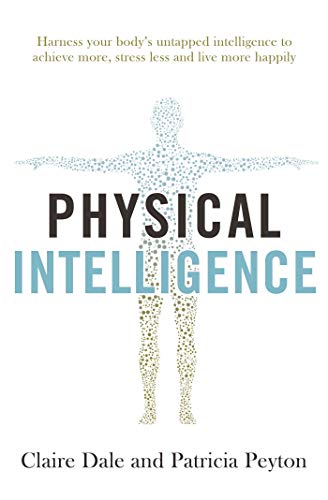When it comes to your car, how do you know when something is wrong? An unfamiliar noise? A strange vibration? Or worse, when the engine blows a gasket? It should be the same with the body, but we often neglect to notice changes in tension and sensation that can impact our wellbeing until it is too late.
The perception of changes inside our bodies called 'interoception' provides an important set of data that supports our Physical Intelligence. If tensions in our muscles become habitual responses, we may become less flexible and find that we are less collaborative and creative, less able to be authentic and adapt to new things.
Too much muscular tension uses up valuable energy to no effect and often creates discomfort and pain. Relieving that tension, not only relieves the discomfort and pain, it improves our mental and emotional flexibility, transforming the feeling of being 'in the grip' of stressors to feeling open and adaptable to them. Relieving tension requires changing our internal chemistry, what we call upping the ODDS: boosting Oxytocin, Dopamine, DHEA and Serotonin, and lowering cortisol. We first need to understand where the tension lies.
MOT stands for 'Map of Tension'. Creating your own MOT is a great way to monitor tension:
- Notice exactly how your body feels right now. Don't change your position. Scan your body. What areas/muscle groups are overly tense, held too tightly for no apparent reason?
- Look at a printed illustration of the human body or quickly sketch an outline - front and back. Mark on the illustration with a cross or a circle the key areas of tension you noticed. Most people have at least two or three 'hotspots'
- Move your body - stand, walk, bend and stretch. Any additional hotspots? Mark them on the graphic and number all locations marked
- Explore the first hotspot by moving that specific area of your body slowly, giving the movement your full attention. If you have pain in that area of the body, begin with the smallest of movements before you try anything bigger. If you have been given restrictions or instructions by any medical professionals re: how you should move that part of your body, please adhere to those instructions. Do not carry out any movements that might exacerbate any medical conditions you may have
- Find a movement - tiny, small, medium or large - that alleviates the tension. Experiment slowly and gently to find what feels most beneficial. If you experience discomfort, sit still and focus your mind on that area with the aim of releasing the tension
- Sometimes focusing on a painful body area can make it temporarily more painful. If this happens, do not try to move that body part. Instead, take 3 breaths, imagining that the breath can reach the area directly, then focus on another, less painful, body area
- Create your own movements or adapt stretches/movements that you know help. Try them with renewed focus and attention. Work carefully and precisely using your body's intelligence to tell you what it needs
- Make note of the movements you have chosen on the illustration of the body
- Bearing in mind that each hotspot sends data sensation or pain to the insular cortex of the brain that enables us to interpret and find solutions, ask yourself these questions:
- What are each of my hotspots telling me? If they could speak, what would they be saying?
- What requests would they make?
- What advice would they give?
- What insights into your patterns of thought and feeling does this exploration provide?
- What do you want to do differently?

